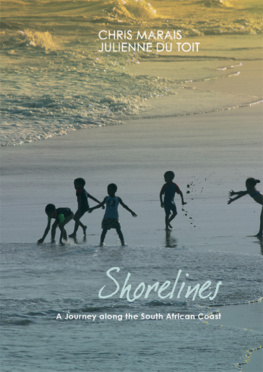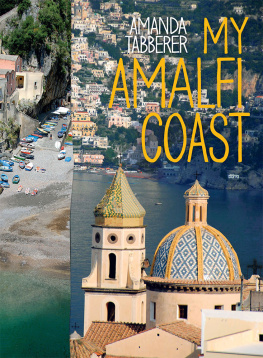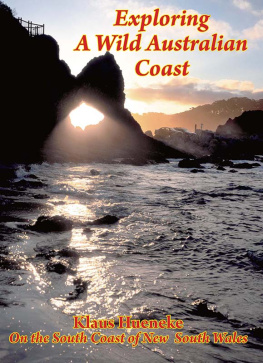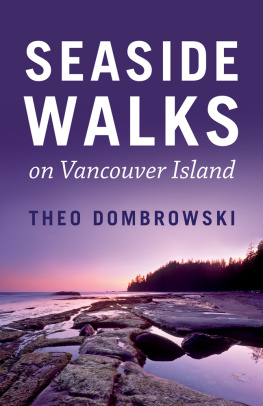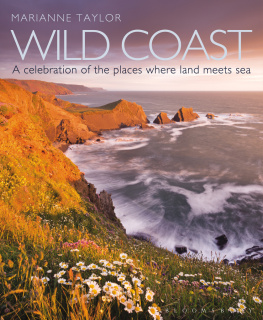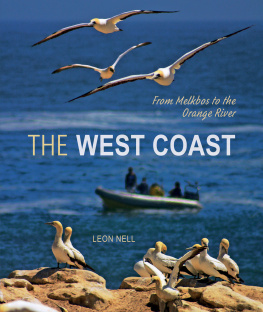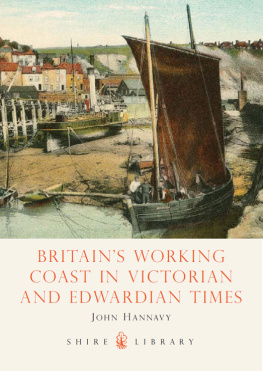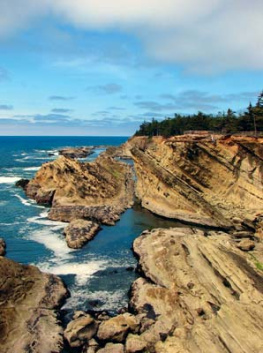Foreword
The fishermens village of Kassiesbaai, part of the larger town of Arniston (also called Waenhuiskrans) near Cape Agulhas.
Something magical happens to your head when you start packing for a seaside holiday. And when you crest that hill after a journey punctuated by burger burps and catfights and some really strange radio, the brightest light bulb in the car shouts: Theres the sea!
And everyone goes gaga. Family feuds are temporarily suspended as you enter the coastal town in a fevered state of anticipation. You know the rest. Youve probably been there many times. Its buckets and spades and The Summer of 42 and Beach Party and sunburnt noses and stolen snogs behind the rocks all over again.
We went to the beach in the spring of 2005. We stayed there for more than two months, travelling the entire course of South Africas coastline from Alexander Bay to Kosi Bay.
Shorelines A Journey along the South African Coast came out of it. The book travelled light but also tackled burning issues that we all need to address before its too late. We loved writing it.
One night late, after completing Shorelines, we were just flipping through the photographs of the trip when something came to mind. There was another book here. Lets put together a joyous visual celebration of seaside life in South Africa, we thought. Just to show people what they stand to lose if they carry on stressing the coast.
We unashamedly plundered little scenes from our Shorelines journal to accompany the photographs of the trip and brought some new material to market. Here is Coast to Coast. Meet the people we came across; share the good light with us. Feel the heat. Stick your toe in both oceans, throw back your head and laugh like no ones watching. Then come and have a drink at The Deck. Life is sometimes just a bowl of oysters.
Chris Marais and Julienne du Toit
Diamond Coast
More than Diamonds
Alexander Bay
Alexander Bay is the last town on the West Coast before you cross into Namibia, and is part of South Africas only true desert biome.
Successful oyster farming is a good sideline business at Alexander Bay.
Up here in Alexander Bay, on the Namibian frontier, you are in a world that few people ever see. Wind-lashed beaches littered with twisted driftwood logs, the pounding onslaught of the Atlantic Ocean, the ghosts of ever-patrolling diamond cops, homing pigeons with dodgy agendas and, just in case you were hungry, the cheapest, freshest little oysters on Earth.
Alexander Bay is so very far away from the glittering windows of Tiffanys or the New York Diamond Dealers Club on West 47th Street, the Japanese jewellery houses of the Ginza in Tokyo or No. 17 Charterhouse Street in London, where more than 80 per cent of the worlds diamonds pass through on their way to the ring fingers and elegant necks of lucky ladies.
And yet, the sweet little Orange River diamonds from the Alexander Bay fields have been adding a glint to lovers eyes since the late 1920s. The area north and south of the Mother Rivers mouth is one of the worlds treasure houses of fabulous, naturally polished high-grade diamonds. The Namas, Bushmen and Strandlopers who walked its shores centuries ago used to pick the diamonds up as they lay glinting in the sands and give them to their children as toys.
Arguably the most colourful character to have walked these ancient diamond beds was one Fred Cornell, whose prospecting nose twitched every time he ventured up into the Richtersveld. And like the copper miners who first worked here, Fred must have literally walked on diamonds without seeing them.
Imagine youre Fred back then, sitting on a lonely spot up on the Orange River, having a quiet smoke in the moonlight. Suddenly, theres the distant sound of a concertina. You go back to the campfire to discover your travelling partner being entertained by a grinning Ovambo wearing a full German colonial army uniform, right down to elastic-sided boots with spurs, heaving away merrily at his concertina, having just appeared out of the black night as if from nowhere. With him are two youngsters, capering away to the music at the fire.
The Alexkor mining area has been scoured for diamonds, leaving scars but also untouched parts.
Fred gives them tobacco and is mildly amused. On they play, apparently tireless. Pretty soon its past everyones bedtime, but still the concertina continues.
At last I had to turn out of my blankets and go for them with a sjambok, he writes in his classic travel book, The Glamour of Prospecting. Then only did they quit, and I turned in again. But I had got a big thorn in my foot, and when I had got that out a scorpion got into my bed, and objected to my being there. Altogether a nice, quiet, idyllic night by the river ...
The tour of the mining area (organised in advance) begins at the Alexander Bay Mine Museum.
The diamonds, washed down the Orange River, mostly lie in a sediment of fossilised oyster shells, explains the museum curator and tour guide, Helen Mostert. To get to this sediment, you have to go through as much as 40 metres of sand and calcrete. Then you get to the gravel on the bedrock, which bears the diamonds.
They search for diamonds out at sea and on land here, and the divers share their profits with Alexkor, Helen says as we sign the indemnity forms. She tells us what not to take in: no cigarette lighters, lipstick, Lip Ice, cellphones, skin cream and, of course, no pigeons. A pigeon-club scam (complete with tiny harnesses to carry smuggled diamonds) was uncovered some years ago, and these tame feathered friends are no longer welcome in Alexander Bay airspace.
Alexander Bay society used to be divided into binnekampers and buitekampers (people who lived inside the restricted area and those who were outside the fence). Before leaving the area for a weekend pass, binnekamp families and their possessions were thoroughly searched. Diamond smuggling in Namaqualand has always been as natural as truffle-sniffing in the south of France.
Namaqualand is a vast, barren area of little more than 120 000 souls, a place that gets a total of 50 millimetres of rain each year. Thats about equal to two or three Johannesburg thunderstorms.


